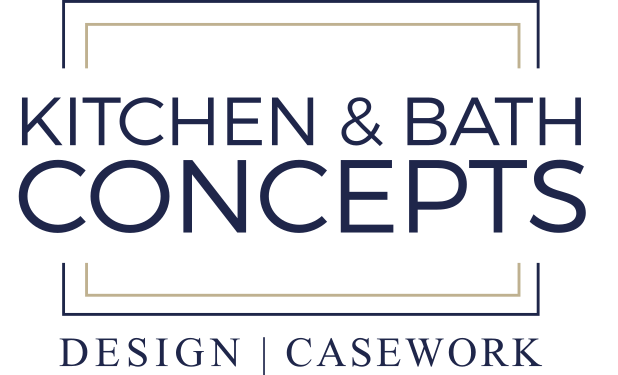Incorporating Textured Surfaces for a Dynamic Interior
Textured surfaces are redefining modern interiors. Whether you’re drawn to fluted stone, grain-relieved wood, or glossy cabinetry, adding texture creates depth, interest, and that elevated, custom feel. In this post, we’re exploring how texture can bring a dynamic edge to your space, especially in kitchens, bathrooms, and modern living areas.
Interior design isn’t just about choosing colors and furniture, it’s about creating a feeling. The right design style brings together form and function in a way that makes your home feel uniquely yours. Understanding different styles can also help guide decision-making during a renovation or new build.
In this guide, we explore the most popular interior design styles of 2025 and what each one reveals about your taste, lifestyle, and mindset. Whether you're drawn to clean minimalism or cozy traditional charm, there’s a design language that speaks to you. Let KBC Pittsburgh help you discover the style that fits both your space and your spirit.
1. Grain-Relieved Veneers: Natural Texture, Elevated
Grain-relieved wood veneers are perfect for adding subtle depth without overwhelming a minimalist space. These surfaces bring out the natural lines and patterns of the wood, offering an organic yet polished feel that complements contemporary interiors beautifully.
Ways to incorporate grain-relieved veneers:
Kitchen cabinetry with vertical grain-relieved pine or oak
Flat-panel pantry doors that highlight horizontal grain lines
Full-wall built-ins in rich wood tones with texture
Entryway or mudroom bench seating with grain detail paneling
This finish offers warmth and variations, perfect for clients who want a clean look with just enough movement to keep things interesting.
2. Fluted Details: From Leathering to Textures
Stone continues to be a staple in modern design, but it’s the surface treatment that’s stealing the spotlight. Textured elements adds dimension, softness, and a more natural look—especially when used in unexpected ways.
Popular stone textures we’re loving:
Leathered countertops – smooth but matte, with a soft feel that’s easy to live with
Fluted islands or vanities – vertical stone grooves for sculptural drama
Reeded backsplashes – tactile movement across the wall surface
Rough-cut fireplace surrounds – bold and earthy with architectural presence
Stone finishes are ideal for creating contrast in high-gloss or monochromatic spaces. They bring balance, richness, and texture, all in one material.
3. Hardware with Character
Textured hardware is the finishing touch that pulls the whole design together. It’s small but mighty, adding a layer of sophistication and intentionality to your cabinetry.
Examples of textured hardware that make a big impact:
Knurled pulls in polished nickel or champagne bronze
Hammered knobs for a handcrafted, artisan feel
Mixed metal finishes for a curated, layered look
Oversized handles that double as a statement piece
Hardware is where form meets function. A textured piece against smooth cabinetry or glass creates that ideal visual and tactile contrast.
Image 1: Premier Custom Built, Rocky Mountain Hardware | Image 2: Premier Custom Built, Red Star Ironworks, Don’s Appliances
Image 3: Premier Custom Built, Don’s Appliances, Rocky Mountain Hardware | Image 3: Premier Custom Build, Armac Martin Hardware
4. Glossy Cabinetry: Sleek Meets Dimensional
Glossy surfaces are a go-to in modern interiors—and for good reason. They reflect light, make small spaces feel bigger, and give cabinetry that ultra-polished feel. But pairing gloss with texture? That’s where things get interesting.
Ideas for combining glossy cabinetry with texture:
High-gloss uppers + matte or grainy lowers for a modern kitchen
Glossy island base against fluted or ribbed stone details
White lacquer cabinets flanked by wood-textured panels
Glossy finish + bold hardware for a punch of personality
Using gloss as a contrast to tactile surfaces can help a room feel bright and open, without falling flat.
5. Pattern and Contrast: The Art of Layering
A dynamic space is never one-note. The secret? Layering texture, pattern, and contrast. Texture can act as a subtle pattern in and of itself—drawing the eye and creating interest without overwhelming the design.
Smart ways to layer texture:
Mix ribbed wood with leathered stone and smooth tile
Use fluted panels in horizontal and vertical orientations
Pair glossy finishes with brushed or matte surfaces
Try 3D wall tiles or paneling for subtle dimension
This thoughtful layering of materials adds depth and drama while still keeping the space grounded in clean, contemporary design.
FINAL THOUGHTS
Texture is more than a design element, it’s a feeling. It’s what turns a space from sleek to stunning, and from styled to soulful. Whether you're integrating grain-relieved wood, reeded stone, or just upgrading your hardware, texture is the tool that makes a modern space feel dynamic and personal.
At KBC, we bring layered, thoughtful texture into every space we design. Let’s talk about how to incorporate it into yours. Book a consultation with KBC Pittsburgh. Our expert designers can help you pinpoint your style and bring it to life.








